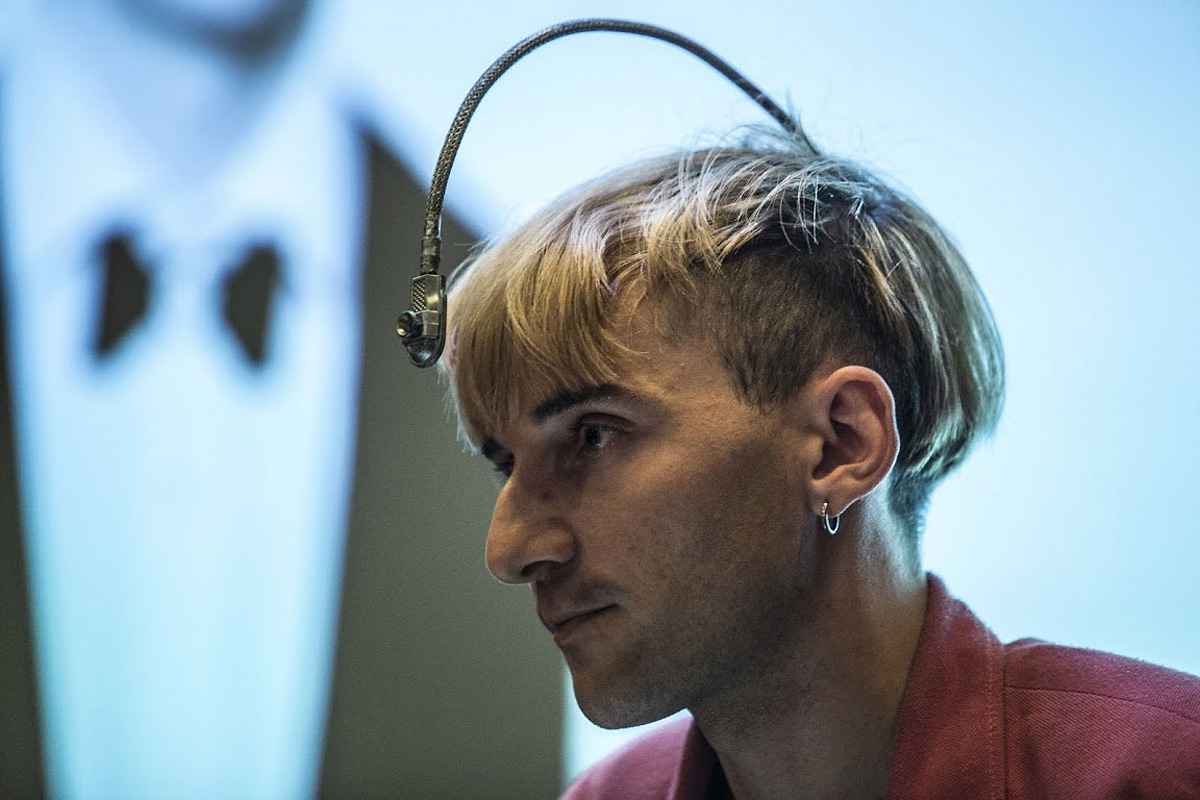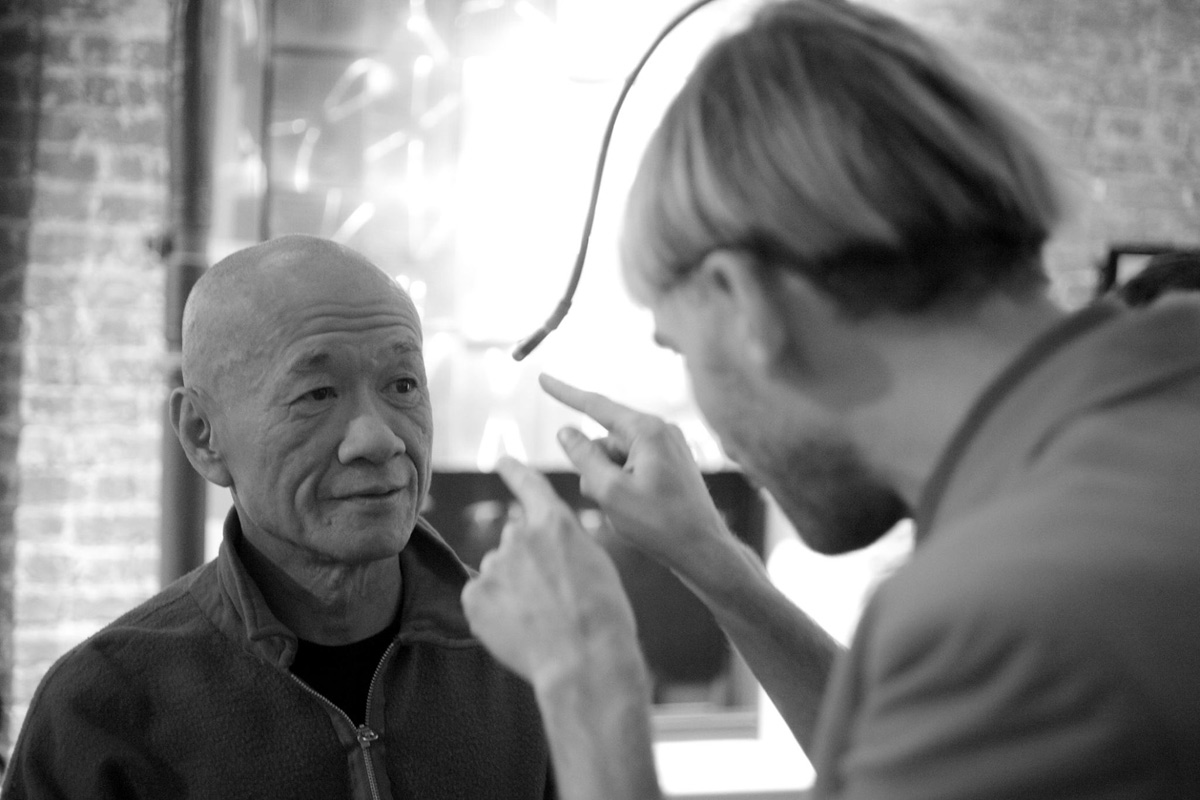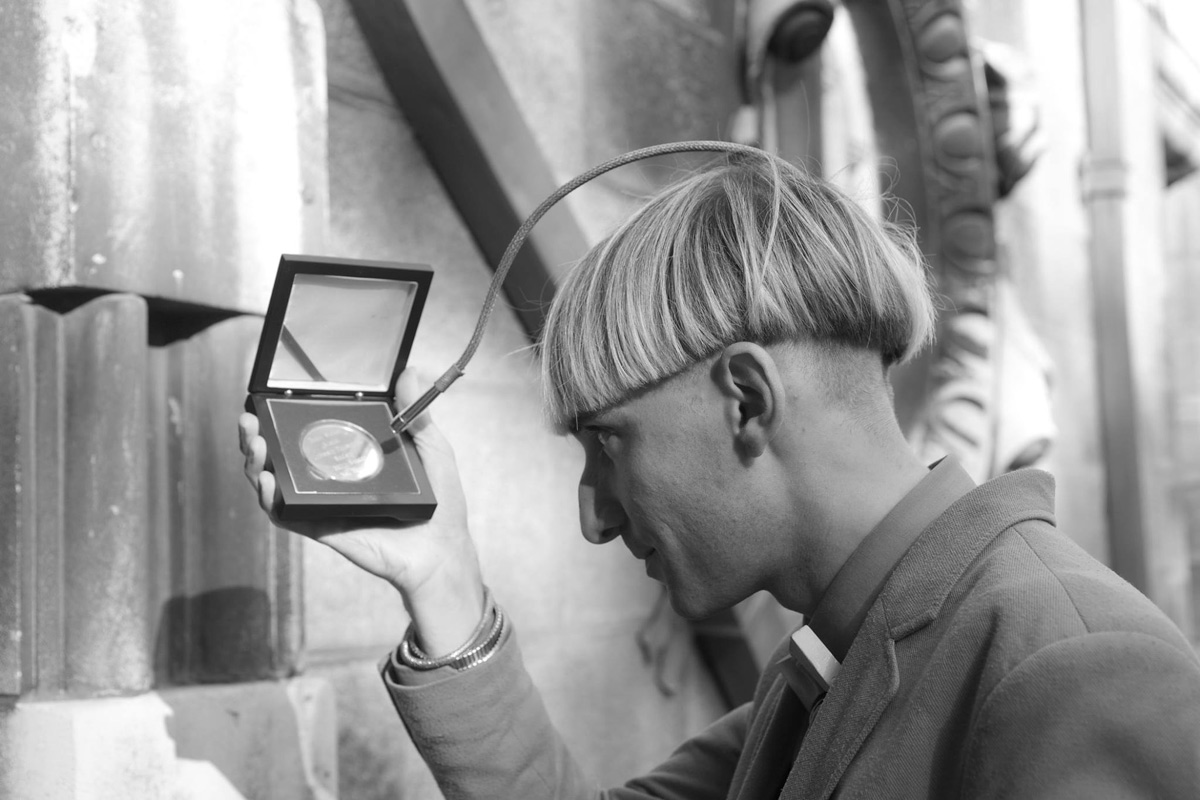Interview: Neil Harbisson
How this man—a colorblind cyborg—is sharing his ability to “hear” colors with the rest of the world


While the term “wearable technology” might make you think of a fitness tracker or Dick Tracy-esque talking wristwatch, Barcelona-based artist Neil Harbisson wears an antenna that is permanently implanted in his head. Diagnosed with achromatopsia (complete color blindness) as a child, Harbisson had been searching for a way to experience color further than the greyscale he knew. The sensor at the end of his antenna reads wavelengths of light, or colors, and converts them into a sound frequency. Different colors translate into different pitches and Harbisson can even “see/hear” colors outside the visible spectrum, such as infrared and UV light. The sound’s volume indicates how vivid the colors are.
The device, which Harbisson calls his “eyeborg,” has become much more than just a tool to aid his visual impairment. It’s transformed the way he interacts with the world—a trip to the supermarket can feel like a night club, with so many brightly colored fruits and vegetables. An outfit for the day is selected based on the major or minor chord he wishes to express. By enhancing his capacities as a human through this device, Harbisson self-identifies as a cyborg—and the UK government considers him one, too, allowing him to include his eyeborg in his passport photo.
Now, Harbisson’s goal is to share this unique experience through his artwork and musical performances, which blend both visual and sonic elements. In “Colour Scores,” Harbisson “converts” well-known songs, from Beethoven’s “Für Elise” to Justin Bieber’s “Baby,” to the colors he visualizes. (John Cage’s silent 4’33” is, unsurprisingly, all black and white.)
In 2010, he founded the Cyborg Foundation with his longtime collaborator and friend, choreographer Moon Ribas, to encourage others to explore this new realm of cybernetics in the arts. Harbisson’s belief is that society shouldn’t just be improving gadgets and making computers and mobile phones more powerful and faster, but writing apps for our own bodies to extend the senses. Imagine a day when one can have a dog’s sense of smell, or a cheetah’s hearing—and use them to create art. We spoke with Harbisson over Skype to learn more about his life as a cyborg activist.

What does the weather sound like where you are? It’s pretty rainy and gloomy here in New York.
Very loud today, because there’s lots of bright colors—it’s very sunny.
Your eyeborg has been updated multiple times since its 2003 inception. What is the current set-up and what are your future plans for updating it?
In front of my eyes, there’s a color sensor that picks up the light frequency and it sends it to the back of my head. I have three holes in my head; one is for the audio entry and the other two are for the antenna. Now, I need to use a very small battery [changed every] 4 or 5 days; it depends if there’s lots of colors or not. But the next stage is to charge it with my blood circulation so I don’t need to depend on external energy; I can use my own body energy.
Can you tell us about your musical background?
I was trained as a pianist, so I studied piano and classical music, and then I went to England to study experimental composition [at Dartington College of Arts in England]. That’s where this project started. This antenna is basically a musical instrument installed in my body. Experimental music.
Yet it’s almost misleading to call you just a musician, or just a visual artist.
In my case, there’s no difference between the visual world and the sonic world—they’re the same. When I hear music, I perceive color, and when I have colors in front of me, I hear music. So it’s in all the same field. If other people start experiencing or experimenting with other unions of senses, then it might happen that we’ll start seeing new art forms.

You also collaborate often with choreographer Moon Ribas. Can you explain how you two work together?
Moon has her own cybernetic extension. She can feel earthquakes through a sensor that she has attached on her elbow, so at her last performance, whenever she felt an earthquake, she started dancing. The sensor is connected to online seismographs [around the world], so wherever she is, she will feel an earthquake. So there’s usually earthquakes every 10 minutes, or 8, or 12. It depends; she’s constantly feeling them.
Depending on the intensity of the earthquake, the dance evolves. I was there putting sound and music to the information that I got from the earthquake, as well. I played the note equivalent to the frequency of the earthquake, and I also used the color light of the same frequency on stage.
You and Moon head the Cyborg Foundation. What are some of the projects the organization is overseeing?
There’s another project that is about sensing what is behind you. In Barcelona, they are developing these four sensors that attach to the head, and then whenever someone gets close to you, it vibrates. It allows you to feel presence behind you or around you, without using your eyes.

How about the activism part of the organization?
It’s just defending basic rights; it’s not creating new rights for cyborgs. We want to be sure that no one is discriminated because they decided to use technology as part of their body. [For example], even though I explain that my camera doesn’t film, sometimes they don’t allow me in [museums]. It’s just trying to make people aware that cameras are not only used to film things; in my case, I’m using a camera for something completely different. I’m not interested in filming anything.
Has there been a time where you’ve been overwhelmed by hearing colors?
Well, just a moment ago! I was trying to connect to a telephone through my antenna. We were just testing this and I got a bit confused because I think I was receiving sounds from somewhere else, and then I was hearing colors, then having a phone call—it was a bit chaotic!
Update: Harbisson recently had British comedian Ruby Wax call his head and uploaded a video online.
Images courtesy of Moogfest












